Photography: Christopher Rimmer – Amapondo
Written by Steven Goldsmith. Photography by Christopher Rimmer Amapondo
Note: The author's views are entirely his or her own and may not reflect the views of RetoxMagazine.com

Wildcoast Cattle arrive at Mpandi beach on South Africa’s beautiful east coast– The Nguni cattle herds of the Xhosa people are more than just a source of labour and food, they are inextricably interwoven into the very essence of what it means to be Xhosa.
Christopher Rimmer – Amapondo
Life is a beach for the bulls that are the stars in multi award winning photographer, Christopher Rimmer’s latest work collectively entitled, Amapondo, which opens at Art Expo, New York at Pier 94 on 24 April, 2015.
The Amapondo people are a sub-branch of the Xhosa tribe who live in brightly painted thatched huts nestled amongst the rolling hills of Pondoland on South Africa’s beautiful and wild east coast.

Christopher Rimmer.
A maze of paths meander through its valleys and down its granite cliffs, fringed by ancient climbing Milkwood Trees, ending at the pristine beaches and surf that form the backdrop to Rimmer’s strikingly beautiful portraits.
Pondo cattle visit the beach every day. Reports from shipwrecked sailors stranded on the Pondoland coast suggest they have been doing so since at least the 16th Century, but no one is quite sure why. Rimmer suspects it is simply because they enjoy being there.
In a series of twenty large scale portraits which possess an almost Zen like quality, Rimmer invites the viewer to reconsider this everyday beast in a new light and in doing so, perhaps forge a new emotional connection to an animal which has served mankind since time immemorial.
'When people see these animals in such an eccentric location, they are both amused and moved, particularly when they realise the scene is natural and hasn’t involved any digital trickery,' Rimmer says. 'I spent a long time observing these animals and, as resistant as I am to anthropomorphising, I could come to no other conclusion than: the bulls visit the beach daily because they simply enjoy being there.'
In most photographs, the subject makes direct eye contact with the viewer, challenging their preconceptions and suggesting an emotional dimension that we, as the audience, may have chosen to ignore.
The protagonist in Christopher Rimmer’s Amapondo series is a living creature whose flesh we eat, whose skin we wear and whose bones we boil down to make glue and yet, here is the same animal perhaps experiencing a certain joy at its own existence.
Amapondo opens at booth S528 at Art Expo New York Pier 94, 711 12th Avenue, Manhattan, New York on 24 April at 10am.
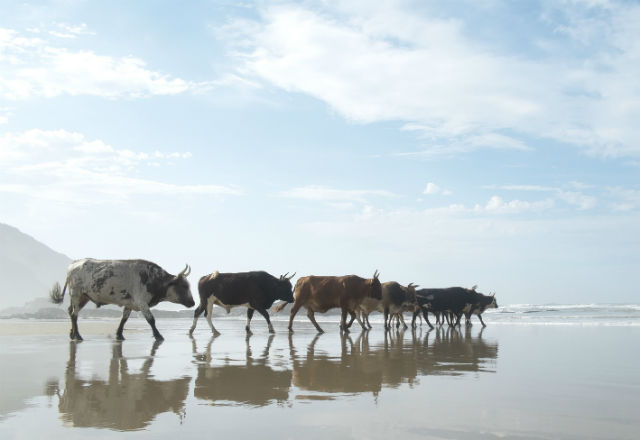
Homeward bound - a complex vocabulary has evolved among the Xhosa people as a means of expressing their feelings, both about the social status their cattle infer, but also to articulate their aesthetic appreciation of the grace and beauty they see in their animals.
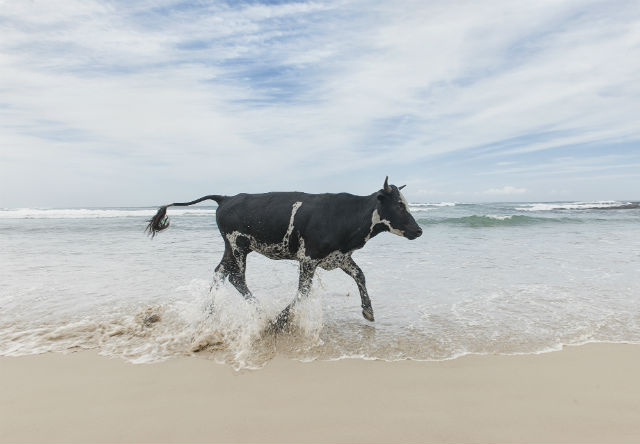
Heifing fun – Nguni cattle behave in a more animated fashion when they are on the beach. It is almost as though the salt air brings them a sense of joy at being alive.
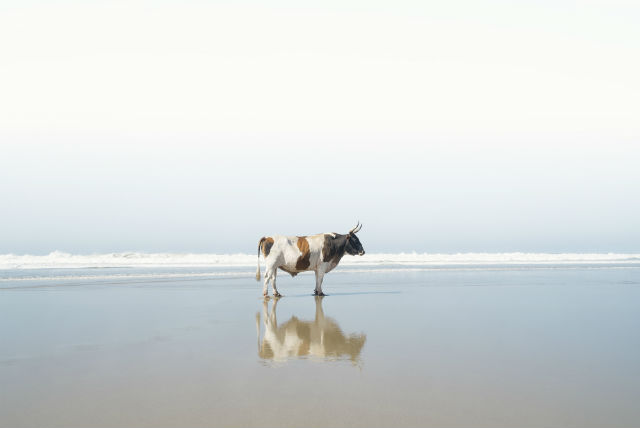
A lone bull possesses an almost Zen like quality as the morning fog lifts along Port St Johns Beach. The Xhosa language contains a large number of onomatopoeic words employed to describe the Wildcoast’s highly variant weather patterns.
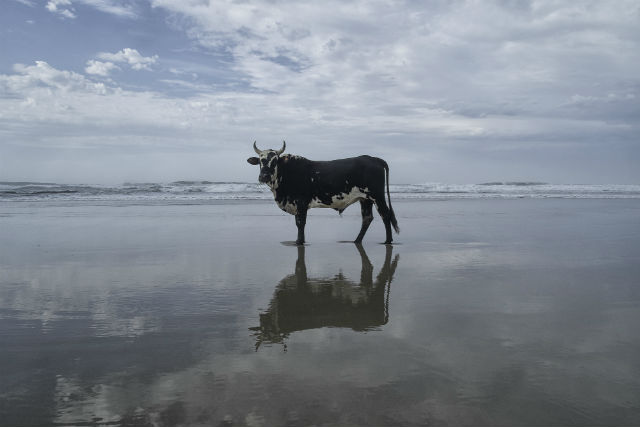
Low Tide, Port St Johns, South Africa
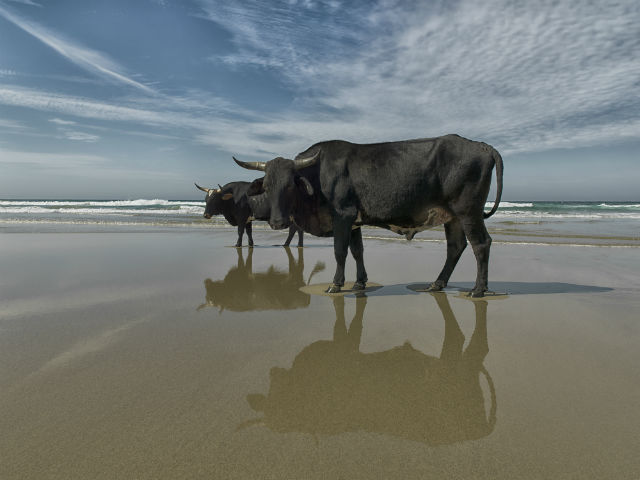
A pair of bulls at Mapandi, South Africa.










